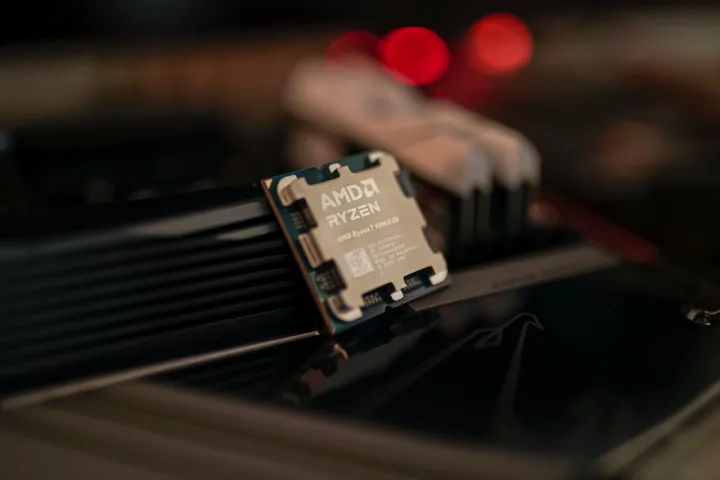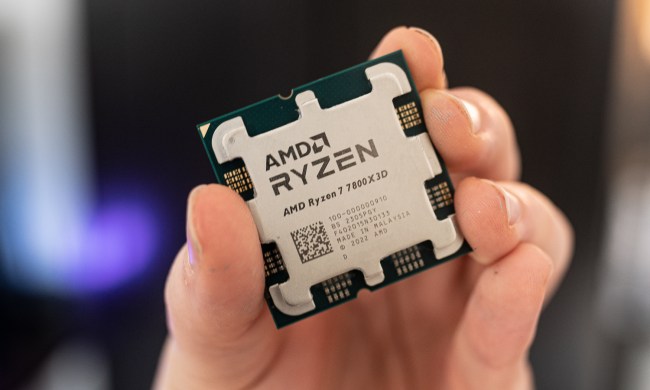Now more than ever, it’s clear that AMD needs to release its 3D V-Cache CPUs alongside each new generation. We’ve gotten accustomed to AMD rolling out its 3D V-Cache offerings shortly after the release of a new generation, but the crowded lineup is getting too much to bear — and it’s making some of AMD’s best processors completely irrelevant.
That becomes obvious as you read my Ryzen 7 9800X3D review. The new CPU is, unsurprisingly, the dominant performer in games, outclassing AMD’s last-gen Ryzen 7 7800X3D. It also makes improvements in productivity performance, however, so much so that it steps on the toes of an already dense lineup of CPUs from AMD.
A complicated lineup

Let’s start here — AMD has a complicated lineup of CPUs. Both AMD and Intel have multiple variations of their processors each generation, cutting some features or adding new ones, but the vast majority of offerings are based around a few critical designs. Intel has three of these designs — the Core Ultra 5, 7, and 9 — while AMD has four. It has the Ryzen 5 and Ryzen 7 offering, and two Ryzen 9 offerings, one with 12 cores and the other with 16.
From those core designs, we’ll see some CPUs that cut the integrated graphics or run at a slower clock speed, or we’ll see some that run at a lower power limit, such as what we saw with the Ryzen 5 7600. AMD’s 3D V-Cache CPUs are a bit different. They’re variations, sure, but highly sought-after ones. Unlike the typical poking and prodding of the core designs we usually see, 3D V-Cache CPUs represent a critical pillar of AMD’s CPU lineup.
Even in past generations, they’ve just narrowly carved out their own space among the four main designs. In the previous generation, the Ryzen 7 7800X3D stood as the go-to gaming CPU, while the pricier Ryzen 9 7950X3D made slight compromises on gaming and productivity performance for shoppers who wanted the best of both worlds. The main lineup, with the Ryzen 7 7700X and Ryzen 9 7950X, still had their place, particularly for shoppers who wanted better productivity performance for a lower price.

Now, AMD is giving CPU shoppers everything they wanted. Going with 3D V-Cache previously meant an intent focus on gaming at the sacrifice of productivity performance, but no longer. The Ryzen 7 9800X3D introduced AMD’s next-gen 3D V-Cache, placing the additional cache below the core die instead of on top of it. This gives the cores direct access to the integrated heat spreader (IHS), improving how well they can be cooled.
It may seem minor, but this change has allowed AMD to maximize the frequency on the Ryzen 7 9800X3D and fully unlock the CPU for overclocking. It also allows the processor to draw more power, getting closer to its 120-watt limit before it overheats. In the process, AMD has boosted productivity performance massively, and that’s a problem for existing Ryzen 9000 CPUs.
An identity crisis
As I was reviewing the Ryzen 7 9800X3D, one thing became clear. Regardless of what the additional cache was doing, the CPU is just an eight-core Zen 5 chip with access to up to 120W of power. In other words, it’s the Ryzen 7 9700X.

Look at Cinebench R24 above. The Ryzen 7 9700X is clearly behind the Ryzen 7 9800X3D, despite the fact that both have eight Zen 5 cores. That’s largely because the Ryzen 7 9700X only goes up to 65W in its standard configuration. If you toggle over to the 105W mode available in the BIOS, the Ryzen 7 9700X and Ryzen 7 9800X3D post identical results. You could take two random samples of these models and likely see the same variance.

It’s not just in Cinebench, either. You can see the exactly same thing happen in Photoshop. The Ryzen 7 9700X is a bit behind the Ryzen 7 9800X3D, but when the latter CPU has access to more power, the two chips post identical results. AMD’s new method of putting the cache under the CPU die works — you’re getting the full performance of eight Zen 5 cores in these productivity applications, even when those cores are pushed to their limits in a workload like Cinebench.
That leaves the Ryzen 7 9700X in an awkward spot, and I suspect we’ll see something similar happen with the Ryzen 9 9900X and Ryzen 9 9950X when 3D V-Cache versions of those CPUs show up. It’s no secret that AMD’s Ryzen 9000 CPUs haven’t been a great performer in games, outside of the first 3D V-Cache offering. And yet, despite that, AMD heavily marketed the processors toward gamers. Maybe that’s why we saw such pitiful sales when the CPUs first launched.
A shift in focus

I’m not saying AMD should get rid of the Ryzen 7 9700X. Even at list price, it’s $120 cheaper than the Ryzen 7 9800X3D, and with that CPU now making the rounds, it’s $160 less. That’s what we’ve seen with previous 3D V-Cache launches. If you don’t need the gaming prowess the extra cache brings, you can save a lot of money by going with a chip within the main lineup, and hopefully AMD maintains that going into the future.
But I’m done pretending like 3D V-Cache CPUs don’t exist, which is what AMD did with the release of Ryzen 9000 processors. It’s hard to trust claims of world-class gaming performance for a new CPU launch when the 3D V-Cache version of a chip is waiting in the wings. AMD still calls the Ryzen 7 9700X “the new standard for a gaming processor” on the official product page, which is downright silly when you compare the performance of it to the Ryzen 7 9800X3D.
AMD is crossing too many wires. It wants to sell buyers on the fact that a new generation will deliver the best gaming performance we’ve ever seen, and then turn around a few months later and release a CPU that’s objectively faster for gaming. It’s hard to say if that hurts AMD or CPU shoppers more, but regardless, the approach is wrong.
At least one 3D V-Cache CPU — the most popular 8-core model, ideally — should arrive with each new generation. That serves AMD and buyers well, and it lends some credibility to AMD’s gaming claims, which continue to be the cornerstone of its marketing strategy. Maybe then, the goalpost for the world’s fastest gaming CPU will move every couple of years rather than in the span of a few months.





